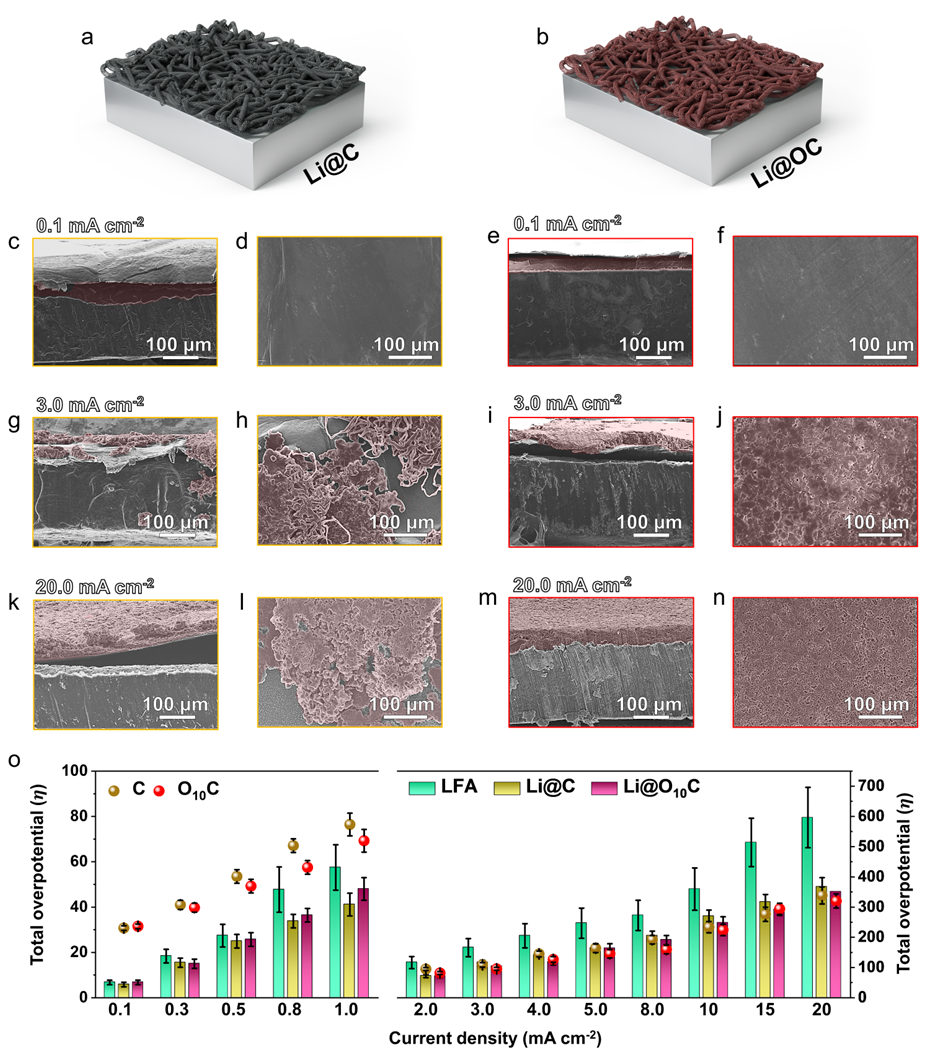High-Power and Large-Area Anodes for Safe Lithium-Metal Batteries
- Year
- 2024
- Author
- Son Ha, Ji Yong Park, Sung-Ho Huh, Seung-Ho Yu, Jin Hwan Kwak, Jungjin Park, Hee-Dae Lim, Dong June Ahn, Hyoung-Joon Jin, Hyung-Kyu Lim, Seung Jae Yang,* Young Soo Yun*
- Journal
- Small
- Vol
- 20
- Page
- 2400638
- Link
- https://doi.org/10.1002/smll.202400638 470회 연결

The lithium deposited via the complex electrochemical heterogeneous lithium deposition reaction (LDR) process on a lithium foil-based anode (LFA) forms a high-aspect-ratio shape whenever the reaction kinetics reach its limit, threatening battery safety. Thereby, a research strategy that boosts the LDR kinetics is needed to construct a high-power and safe lithium metal anode. In this study, the kinetic limitations of the LDR process on LFA are elucidated through operando and ex situ observations using in-depth electrochemical analyses. In addition, ultra-thin (≈0.5 µm) and high modulus (≥19 GPa) double-walled carbon nanotube (DWNT) membranes with different surface properties are designed to catalyze high-safety LDRs. The oxygen-functionalized DWNT membranes introduced on the LFA top surface simultaneously induce multitudinous lithium nuclei, leading to film-like lithium deposition even at a high current density of 20 mA cm−2. More importantly, the layer-by-layer assembly of the oxygen-functionalized and pristine DWNT membranes results in different surface energies between the top and bottom surfaces, enabling selective surface LDRs underneath the high-modulus bilayer membranes. The protective LDR on the bilayer-covered LFA guarantees an invulnerable cycling process in large-area pouch cells at high current densities for more than 1000 cycles, demonstrating the practicability of LFA in a conventional liquid electrolyte system.